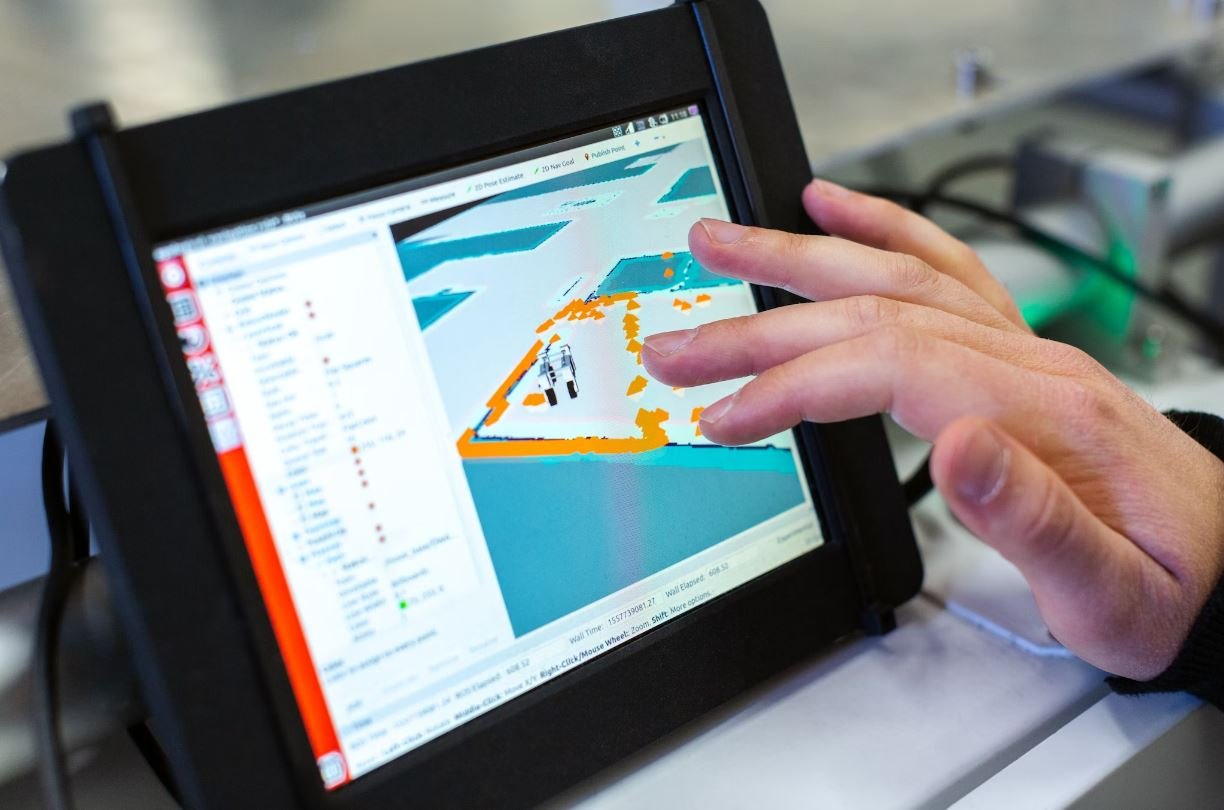AI Applications Using Python
Artificial Intelligence (AI) has become an integral part of modern technology, revolutionizing various industries with its ability to analyze vast amounts of data, make predictions, and learn from patterns. Python, a powerful and versatile programming language, has emerged as the go-to choice for AI development due to its simplicity, vast libraries, and strong community support. In this article, we explore various AI applications and how Python is utilized to develop innovative solutions.
Key Takeaways
- Artificial Intelligence enhances industry efficiency and decision-making capabilities.
- Python’s simplicity and extensive libraries make it a preferred language for AI development.
- AI applications using Python range from computer vision and natural language processing to predictive analytics and autonomous systems.
- Machine learning algorithms, such as deep learning and reinforcement learning, drive many AI applications.
AI Applications in Various Industries
AI has revolutionized several industries, empowering businesses to gain actionable insights and automate complex tasks. Python’s rich ecosystem enables developers to implement AI algorithms effectively. *Python libraries like TensorFlow and Keras provide powerful tools for developing deep learning models*, making it accessible and efficient for creating AI applications across industries. Here are a few examples of AI applications:
1. Healthcare
In the healthcare industry, AI applications improve diagnostics, drug discovery, and patient care. Advanced machine learning algorithms analyze medical data and images to identify patterns and assist doctors in diagnosis. *AI can automate repetitive tasks, enabling healthcare professionals to focus on critical and complex cases*. Potential applications include early disease detection, personalized treatment plans, and medical image analysis.
2. Finance
AI plays a vital role in finance by analyzing market trends, predicting stock prices, and optimizing investment portfolios. Python’s data manipulation and statistical libraries, such as Pandas and NumPy, make it easy to process large financial datasets. *By utilizing AI algorithms, finance professionals can make data-driven investment decisions and minimize risk*. Applications range from fraud detection and credit scoring to algorithmic trading and robo-advisors.
3. Retail
Retailers leverage AI to enhance customer experience and optimize operations. Python’s natural language processing (NLP) capabilities enable sentiment analysis of customer reviews and social media data, helping businesses understand customer preferences and tailor marketing strategies. *AI-powered recommendation systems drive personalized product suggestions*, increasing customer satisfaction and sales. Additionally, AI algorithms aid in demand forecasting and inventory management to optimize supply chains.
4. Transportation
AI is transforming the transportation sector, enabling autonomous vehicle navigation, route optimization, and predictive maintenance. Python’s computer vision libraries, such as OpenCV, enable real-time object detection and recognition, crucial for autonomous driving. *Machine learning algorithms learn from transportation data to make accurate predictions and improve traffic management*. Smart traffic systems, route optimization algorithms, and vehicle fleet management are some of the AI applications in transportation.
AI with Python: Example Use Cases
Python offers a wide range of libraries and frameworks that simplify AI development. Let’s explore some popular AI libraries and their applications:
| Library | Application |
|---|---|
| TensorFlow | Deep learning for image and speech recognition. |
| Scikit-learn | Supervised and unsupervised machine learning algorithms for various predictive tasks. |
| Natural Language Toolkit (NLTK) | Natural language processing (NLP) tasks such as sentiment analysis and named entity recognition. |
| Use Case | Description |
|---|---|
| Image Classification | Identifying objects in images, such as facial recognition or object detection. |
| Chatbots | AI-powered virtual assistants for conversation-based interactions with users. |
| Customer Churn Prediction | Utilizing machine learning algorithms to forecast customer attrition rates. |
The Future of AI and Python
As AI continues to advance, Python remains at the forefront of AI development due to its simplicity, flexibility, and extensive libraries. Python’s ecosystem empowers developers to build sophisticated AI applications across various industries, fostering innovation and automation. With the increasing availability of data and advancements in machine learning algorithms, the potential for AI applications is immense. Python’s role in AI will continue to grow, fueling exciting advancements and transforming industries worldwide.

Common Misconceptions
1. AI is only used for advanced tasks
One common misconception about AI applications using Python is that they are only used for complex and advanced tasks. However, AI can be applied to a wide range of simple tasks as well.
- AI can be used in customer support to provide automated responses to frequently asked questions.
- AI can assist in data analysis by automatically categorizing and summarizing large datasets.
- AI can be employed in recommendation systems to provide personalized suggestions for products or content.
2. AI can replace human intelligence completely
Another misconception is that AI has the potential to completely replace human intelligence. While AI has shown remarkable capabilities, it is still far from replicating human intelligence.
- AI systems lack the ability to understand complex emotions and empathy that humans possess.
- Human intuition and creativity still surpass AI when it comes to tasks requiring imagination and innovation.
- Certain decision-making tasks that involve intricate ethical considerations are better suited for human judgment.
3. Implementing AI applications requires advanced programming skills
Many people assume that implementing AI applications using Python requires extensive programming knowledge and skills. However, there are now numerous libraries and frameworks available that make it easier for developers of varying levels to work with AI.
- Frameworks like TensorFlow and Keras provide high-level APIs, making it simpler to build and train AI models.
- There are pre-trained models and resources available online that can be utilized without extensive coding knowledge.
- Python offers a wide range of AI and machine learning libraries that provide ready-to-use functions and algorithms.
4. AI applications are always accurate and error-free
Contrary to popular belief, AI applications are not always infallible and can still make mistakes. While AI models can perform exceptionally well on certain tasks, they are not immune to errors and inaccuracies.
- AI models heavily rely on the quality and quantity of data they are trained on. Insufficient or biased data can lead to inaccurate predictions.
- Ambiguity in data or input can pose challenges to AI models, resulting in incorrect outcomes.
- AI models can be vulnerable to adversarial attacks, where intentionally crafted inputs can manipulate their predictions.
5. AI will eliminate job opportunities
There is a common fear that AI advancements will lead to a significant loss of job opportunities. While AI has the potential to automate certain tasks, it also brings new possibilities and job roles.
- AI can create new job opportunities related to the development, maintenance, and improvement of AI systems.
- New interdisciplinary roles can emerge that combine human expertise with AI capabilities.
- Automation of mundane tasks through AI can allow humans to focus on more creative and complex aspects of their work.

With the advancement in Artificial Intelligence (AI) technology, businesses are now able to leverage its vast applications in various sectors. Python, being a versatile and powerful programming language, has become a popular choice for implementing AI solutions. This article explores ten interesting use cases of AI applications using Python, showcasing their potential to revolutionize industries.
—
Enhancing Customer Experience in Retail
In the ever-competitive retail industry, providing exceptional customer service is crucial. This table illustrates how Python-powered AI applications can enhance customer experiences by analyzing shopping patterns, predicting demands, and personalizing recommendations to drive sales.
| Customer | Shopping Patterns | Predicted Demands | Personalized Recommendations |
| ——– | —————- | —————- | —————————- |
| John | Frequent visits | New tech gadgets | Latest smartphones and laptops |
| Lisa | High-value purchases | Fashion trends | Designer clothing and accessories |
| Mike | Seasonal shopping | Outdoor gear | Camping equipment and adventure travel offers |
—
Improving Healthcare Diagnostics
Efficient diagnosis is vital in healthcare to enable timely treatment and save lives. This table showcases how Python-based AI applications can analyze medical data, aid in diagnosing diseases, and recommend treatment plans, leading to better patient outcomes.
| Patient | Medical Test Results | Diagnosis | Treatment Plan |
| ——- | ——————- | ——————– | ———————— |
| Sarah | X-ray, MRI, blood tests | Broken leg | Surgery and rehabilitation |
| David | CT scan, biopsy | Cancerous tumor | Radiation therapy |
| Emily | EKG, lab tests | Heart arrhythmia | Medication and lifestyle changes |
—
Streamlining Financial Transactions
The finance industry can greatly benefit from Python-driven AI applications that automate and secure financial transactions. This table demonstrates how Python’s computational power can improve transaction speed, accuracy, and fraud detection, ensuring a seamless financial experience.
| Transaction | Speed | Accuracy | Fraud Detection |
| ———– | ———- | ——– | —————————- |
| Online | Milliseconds | Error-free | Identifying suspicious patterns |
| Mobile Payment | Seconds | High precision | Real-time fraud alerts |
| Trading | Nanoseconds | Minimal errors | Detecting market manipulation |
—
Optimizing Supply Chain Management
Efficient supply chain management is crucial for businesses to streamline operations and meet customer demands. This table showcases the role of Python-powered AI applications in optimizing inventory, predicting demand, and refining logistics for better resource utilization.
| Company | Inventory Management | Demand Forecasting | Logistics Optimization |
| ——– | ——————– | —————— | ———————- |
| ABC Corp | Just-in-time inventory | Seasonal sales | Efficient route planning |
| XYZ Ltd | Vendor-managed inventory | Trend analysis | Real-time shipment tracking |
| DEF Inc | Automated restocking | Market demand | Warehouse layout optimization |
—
Enhancing Cybersecurity Systems
In the digital era, protecting sensitive information is paramount. Python-based AI applications enable intelligent cybersecurity solutions. This table presents how AI-driven Python programs can identify threats, analyze anomalies, and fortify systems to ensure robust data protection.
| Threat Type | Anomaly Detection | Risk Assessment | Defense Mechanisms |
| ————— | —————– | ————————- | ———————— |
| Malware | Unexpected behaviors | Probability calculations | Antivirus and firewalls |
| Phishing | Suspicious emails | Authenticity analysis | Behavioral biometrics |
| DDoS Attacks | Traffic analysis | Vulnerability assessment | Intrusion prevention systems |
—
Revolutionizing Autonomous Vehicles
The rise of autonomous vehicles has opened up new horizons for transportation. Python-powered AI applications play a pivotal role in enabling self-driving cars. This table showcases how AI algorithms using Python can perceive surroundings, detect objects, and make informed decisions on the road.
| Vehicle | Object Detection | Passenger Safety | Route Planning |
| ———– | ——————– | ————————- | ———————- |
| Car | Pedestrian recognition | Collision avoidance | Predicting optimal routes |
| Drone | Obstacle detection | Payload safety assessment | Efficient delivery paths |
| Robot Taxi | Traffic sign recognition | Emergency braking | Traffic congestion avoidance |
—
Empowering Natural Language Processing
Natural Language Processing (NLP) is a vital area of AI, enabling machine understanding of human language. This table illustrates how Python-based NLP applications can execute sentiment analysis, language translation, and voice recognition, facilitating effective communication.
| Task | Sentiment Analysis | Language Translation | Voice Recognition |
| —————— | —————– | ——————- | —————————— |
| Customer Reviews | Positive/Negative | Multiple Languages | Voice control in smart devices |
| Document Summarization | Key Points | Multilingual texts | Transcribing speech to text |
| Speech-to-Text | Tone Analysis | Translating Speech | Natural Language Understanding |
—
Personalizing Online Recommendations
E-commerce platforms can leverage AI-powered recommendation systems to understand customer preferences better. This table demonstrates how Python-based algorithms can suggest personalized products, tailor advertisements, and improve user engagement.
| User | Purchased Items | Recommended Products | Targeted Advertisements |
| ——– | ————– | ——————– | ———————- |
| Alex | Fashion clothes | Accessories | Discounts on trending fashion |
| Emma | Tech gadgets | Peripheral devices | Offers on related products |
| Liam | Home appliances | Smart-home devices | Upcoming promotions on electronics |
—
Enhancing Agricultural Practices
Agriculture is embracing AI technology to boost productivity and optimize resource utilization. This table illustrates how Python-driven AI applications can provide crop recommendations, monitor weather conditions, and detect potential diseases to improve agricultural practices.
| Farm | Crop Recommendation | Weather Monitoring | Disease Detection |
| ——- | —————— | ———————– | —————– |
| Farm A | Wheat cultivation | Precipitation levels | Early signs of plant diseases |
| Farm B | Rice plantation | Temperature monitoring | Identifying pest infestations |
| Farm C | Cotton farming | Soil moisture analysis | Monitoring fungal infections |
—
Conclusion
The applications of AI using Python are extensive and diverse, providing innovative solutions across various industries. Whether it is enhancing customer experiences, revolutionizing healthcare, streamlining financial transactions, or improving agricultural practices, Python’s compatibility with AI algorithms empowers businesses to achieve unprecedented levels of efficiency and innovation. As this technology continues to evolve, the potential for AI applications using Python is practically limitless, making the future of AI immensely exciting and promising.
Frequently Asked Questions
What are some popular AI applications that can be developed using Python?
Some popular AI applications that can be developed using Python include speech recognition, image recognition, natural language processing, recommendation systems, and predictive analytics.
How can Python be used for speech recognition?
Python can be used for speech recognition by utilizing speech recognition libraries such as SpeechRecognition or PyAudio. These libraries provide functionality to capture audio input, convert it to text, and perform actions based on the recognized speech.
What is image recognition and how can Python be used for it?
Image recognition is the process of identifying and detecting objects or patterns in digital images or videos. Python can be used for image recognition by leveraging libraries like OpenCV, TensorFlow, or Keras. These libraries provide pre-trained models or tools for training custom models to recognize objects in images.
Can Python be used for natural language processing (NLP)?
Yes, Python can be used for natural language processing (NLP). There are several NLP libraries available in Python such as NLTK, SpaCy, and Gensim, which provide functionalities for tasks like tokenization, part-of-speech tagging, named entity recognition, sentiment analysis, and text classification.
What are recommendation systems and how can Python be used to build them?
Recommendation systems are algorithms that suggest items to users based on their preferences or behavior. Python can be used to build recommendation systems by utilizing machine learning algorithms like collaborative filtering or content-based filtering. Libraries like Surprise or LightFM provide implementations that can be used to develop recommendation systems.
How can Python be used for predictive analytics?
Python can be used for predictive analytics by employing machine learning algorithms to analyze historical data and make predictions or forecasts about future events. Libraries such as scikit-learn, TensorFlow, or PyTorch offer a wide range of tools and models for predictive analytics.
What are the benefits of using Python for AI applications?
Python is widely known for its simplicity and readability, making it easier to develop and maintain AI applications. It has a vast number of libraries and frameworks specifically designed for AI tasks, which provide ready-to-use functionality and simplify the development process. Additionally, Python’s active community ensures constant updates and support for AI-related projects.
Are there any limitations to using Python for AI applications?
While Python is a powerful language for AI, it may not be the best option for computationally intensive tasks or real-time applications that require low latency. In such cases, languages like C++ or specialized frameworks like TensorFlow with GPU acceleration may be more suitable.
What are the prerequisites for learning AI applications using Python?
To learn AI applications using Python, it is beneficial to have a basic understanding of programming concepts and Python syntax. Familiarity with mathematics and statistics, particularly linear algebra and probability theory, is also advantageous for understanding underlying algorithms and models.
Are there any online courses or resources available to learn AI applications using Python?
Yes, there are numerous online courses, tutorials, and resources available to learn AI applications using Python. Popular platforms like Coursera, Udemy, and edX offer courses specifically focused on AI and machine learning with Python. Additionally, communities like Stack Overflow and GitHub provide valuable resources and discussion forums for AI-related topics.





